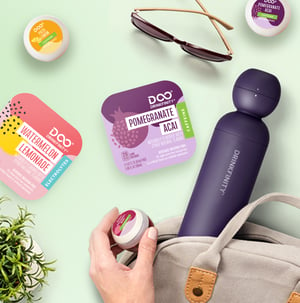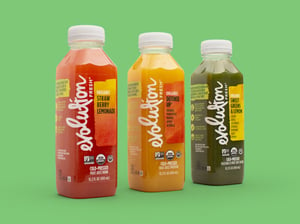Written by
Melissa Lohrer
With the help of Instagram, so-called millennial brands, have taken on a specific aesthetic: think avocado toast, terrazzo interiors, and motivational messages.
For a while, consumers—gen Y consumers in particular—were delighted by this ethos. Legacy brands latched on with playful posts and pithy copy, while some new brands made it the foundation on which their business lies.
More recently, consumers and experts alike began to bemoan the approach as unoriginal (and the Instagram platform itself as an echo chamber). One 2019 study showed brands losing 45.6% of their engagement over the course of the year. And a roll-out of “super ads” tested the limits of viewer exhaustion—even in a universe of tranquil pastels and perfectly prepared brunches. It was solid evidence that this feel-good aesthetic was no longer a magic pill for brands. Then came a global pandemic, followed by giant cultural shifts around a growing movement to end racial injustice. Consumer expectations are evolving every day, and audiences are looking for brands they can trust—ones that will be real, be true, and step it up.
Then came a global pandemic, followed by giant cultural shifts around a growing movement to end racial injustice. Consumer expectations are evolving every day, and audiences are looking for brands they can trust—ones that will be real, be true, and step it up.
How can brands evolve to meet expectations? We asked our Founding Partner Paul McDowall, Creative Director Adrienne Muken, and Strategy Director Jenn Morrissey.
Resisting the QUICK wins
The fatal flaw of the aesthetic in question is that it’s become derivative, dominated by finding easy footholds to score fast wins. And while it’s tempting to fit your brand into a proven, templated ethos, these short-term victories can become long-term losses.
“The brands who took the time to build something on their own character, with soul and depth, will evolve, mature, and last,” says Paul. “The ones who followed the trend will mostly melt away or fundamentally reinvent themselves.”
Even big box retailers have been guided by this aesthetic, making it complicated for brands to break free of it if they want to secure shelf space. But with the rise in popularity of shopping at home and DTC purchasing, we foresee a future where brands will rely less and less on gatekeepers to determine their Design-with-a-capital-D.
So if the proven aesthetic isn’t the end destination, how do you know where to go? Asking yourself how you’re relevant to millennials is a good place to start—looking to your character will take you forward from there.
Stop Looking at Everyone Else!
It’s an age-old question for brands: to fit in or stand out? While certain looks come standard in to fit in or stand out? While certain looks come standard in particular industries, simply conforming to what works won’t build a lasting brand.
The key to breaking apart from the pack is thinking about your brand’s DNA. What is the most idiosyncratic thing about your brand? Determine what makes you truly different, follow that trajectory beyond a basic veneer, and you’ll land in a place that’s truly bespoke to your brand. For an example, look to Drinkfinity. This eco-friendly hydration system struggled to connect with —and keep—consumers without a clear story or purpose. By understanding what its key consumers wanted and clarifying Drinkfinity’s message to one of making water fun to drink, we were able to help them corner the millennial market without the use of tired tropes.
For an example, look to Drinkfinity. This eco-friendly hydration system struggled to connect with —and keep—consumers without a clear story or purpose. By understanding what its key consumers wanted and clarifying Drinkfinity’s message to one of making water fun to drink, we were able to help them corner the millennial market without the use of tired tropes.
What we saw in our work with Drinkfinity holds true for many brands: solving for one target doesn’t exclude you from winning over a larger audience. It’s not an either/or scenario. By building a cohesive brand experience based on values, you often end up speaking more authentically even to those outside of your intended set.
Responding to a Global Shift
Staying true to your values is timeless advice, but in the current cultural climate it has even more gravity.
“There’s a formula that allows brands to be non-committal,” says Adrienne. “But now with a shift in the global landscape, we’re going to see a change. If brands will have the same power they had previously, they need to make a stand.”
Brands who capitalized on the Instagram-fueled aesthetic may have leaned on casual conversation and playfulness to get them this far. But where do we go from here? “Consumers don’t need everything down to their pasta to have a conversation with them,” says Jenn. “If there’s no conversation because there’s no need for one, what will take its place? Whatever that change is, it’ll require bold honesty.”
“Consumers don’t need everything down to their pasta to have a conversation with them,” says Jenn. “If there’s no conversation because there’s no need for one, what will take its place? Whatever that change is, it’ll require bold honesty.”
We’ve yet to see if the future that unfolds will be more utilitarian—built on the usefulness of products for buyers in a distressed economy—or high-gloss and escapist. But no matter where consumers’ needs go, it’ll be up to brands to follow. Responsive and responsible action will be non-negotiable—how will you listen and react to what consumers are asking for?
The Next STEP
Where to go from here depends on where your brand is in its lifecycle. Legacy brands who have found themselves leaning on trends too heavily might benefit from returning to their roots and doing foundational work. Can you be the bold brand that makes change ahead of time instead of riding the wave?
How can you recast yourself in a way that’s genuine to your brand but aesthetically contemporary? (Starbucks’ Evolution Fresh offers one example—we helped this fresh-press juice pioneer reinvigorate its visual identity with a focus on its role in real consumers’ lives.)
See the Work: Evolution Fresh If you’re a young brand who has built your identity on the millennial aesthetic, now is the best time to go back to the drawing board and find what you do well. Define your character, and you’ll no longer need to rely on templates to forge ahead.
If you’re a young brand who has built your identity on the millennial aesthetic, now is the best time to go back to the drawing board and find what you do well. Define your character, and you’ll no longer need to rely on templates to forge ahead.
Interested in hearing more real-time advice on branding and business? Follow us on LinkedIn and subscribe to our newsletter.
Sign up for the latest news and views
